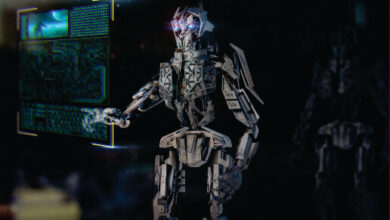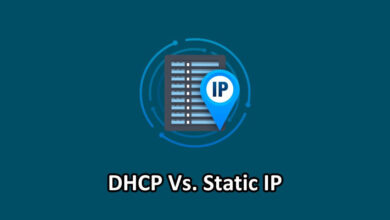IoT vs Robotics : Understanding the Difference [With Table]
The integration of the Internet of Things (IoT) and Robotics has become a transformative force across diverse industries, reshaping the way businesses operate and individuals interact with technology. In recent years, the increasing significance of these technologies has been evident in sectors such as manufacturing, healthcare, agriculture, and more.
The synergy between IoT and Robotics has led to advancements in automation, efficiency, and connectivity, paving the way for a new era of innovation.
Despite their growing importance, there’s often confusion or misconceptions surrounding the terms “IoT” and “Robotics.” Many individuals use these terms interchangeably, but they represent distinct technological domains, each with its unique features and applications.
IoT Vs. Robotics (A Comparison)
| IoT | Robotics |
|---|---|
| IoT refers to the network of interconnected physical devices, vehicles, appliances, and other objects embedded with sensors, software, and network connectivity. | Robotics is a field of technology that involves the design, construction, operation, and use of robots. |
| IoT devices are often designed to collect data and transmit it to external systems for analysis and decision-making. | Robots are capable of operating autonomously and can make decisions based on pre-programmed algorithms. |
| IoT primarily focuses on the collection of data from various sensors and devices. | Robots are equipped to interact with the physical world, performing tasks such as assembly, manipulation, or navigation, often in industrial or specialized environments. |
| IoT applications are widespread in various aspects of daily life including smart homes, healthcare monitoring, agriculture optimization, and more. | Robotics applications are often found in industrial settings, where automation can streamline manufacturing processes. |
| IoT devices interact with the environment through sensors that collect data. | Robotics involves physical interaction with the environment. |
| The primary goal of IoT is to efficiently collect, transmit, and utilize data for insights and decision-making. | Robotics aims to perform physical tasks efficiently and autonomously. |
What is IoT (Internet of Things)?
The Internet of Things (IoT) refers to a network of interconnected devices that communicate and share data over the Internet. These devices, equipped with sensors and actuators, collect and exchange information, enabling them to make intelligent decisions without human intervention.
IoT extends beyond traditional computing devices to include everyday objects, creating a seamless environment where the physical and digital worlds converge.
Functionalities and Applications of IoT
IoT functionalities include data collection, real-time monitoring, and automation. In practical terms, this translates to smart homes, healthcare wearables, and industrial sensors. IoT applications span across various sectors, enhancing efficiency in agriculture, healthcare, transportation, and more. For instance, in agriculture, IoT devices monitor soil conditions and automate irrigation.
What is Robotics?
Robotics involves the design, construction, operation, and use of robots to perform tasks autonomously or with minimal human intervention. Robots are mechanical or virtual agents capable of executing complex actions based on pre-programmed instructions or learning from their environment.
Functionalities and Applications of Robotics
Robotics functionalities include precise movement, sensor integration, and adaptability. In manufacturing, robots assemble products with precision, while in healthcare, they assist in surgeries. From automated vacuum cleaners to complex surgical robots, the applications of robotics are diverse and continually expanding.
Key Differences Between IoT and Robotics
Nature of Connection: IoT involves the connection of devices for data exchange, while robotics deals with the design and operation of physical machines.
- Autonomy: IoT devices often rely on external systems for decision-making, whereas robots can operate autonomously.
- Scope of Function: IoT is more about data collection and communication, while robotics emphasizes physical actions and tasks.
- Applications: IoT is prevalent in daily life and business operations, while robotics is often associated with industrial and specialized applications.
- Interaction: IoT devices interact with the environment through sensors and data, while robots interact physically through movement and manipulation.
- End Goal: The primary goal of IoT is efficient data utilization, while robotics aims at performing physical tasks efficiently.
Key Components of IoT
An IoT system comprises interconnected devices, communication protocols, and cloud infrastructure. Devices with sensors and actuators collect data, which is then transmitted through communication protocols to centralized servers for processing and analysis.
IoT devices encompass a wide range, from smart thermostats to wearable health trackers. These devices find applications in smart homes, healthcare, transportation, and industrial settings. For instance, smart meters in energy grids enable efficient resource management, while wearable fitness trackers monitor health metrics in real time.
Key Components of Robotics
Robotic systems consist of mechanical components, sensors, actuators, and a control system. The mechanical structure provides the robot’s physical form, while sensors gather information from the environment. Actuators execute movements, and the control system processes data to guide the robot’s actions.
Robotic applications are diverse, ranging from industrial automation to space exploration. Industrial robots, equipped with precision actuators, assemble products with accuracy and speed. Robotic vacuum cleaners use sensors to navigate and clean homes autonomously.
Overlap and Interconnection
The intersection of IoT and Robotics occurs in applications where connected devices collaborate with robotic systems. For example, in smart manufacturing, IoT sensors gather data on machine performance, enabling predictive maintenance and optimization through robotic automation.
Examples of Integrated Systems Leveraging Both Technologies
Integrated systems combining IoT and Robotics can be seen in logistics, where IoT-enabled warehouses utilize robots for inventory management and order fulfillment. These systems enhance operational efficiency by seamlessly blending data-driven decision-making with robotic capabilities.
Conclusion
In conclusion, the collaboration between IoT and Robotics is shaping the future of technology, offering unprecedented possibilities for automation, efficiency, and connectivity. Understanding the distinctions between IoT and Robotics is crucial for businesses and individuals seeking to leverage these technologies for innovation and growth.
Businesses can gain a competitive edge by strategically implementing IoT and Robotics, while individuals benefit from the convenience and improved quality of life these technologies bring. As the integration of IoT and Robotics continues to evolve, staying informed and embracing these advancements is key to staying ahead in a rapidly changing technological landscape.
FAQs about IoT vs. Robotics
What is the main Difference Between IoT and Robotics
The main difference lies in their focus and functionality. IoT is about creating a network of interconnected devices for data exchange, while Robotics involves the development of autonomous or semi-autonomous mechanical agents capable of performing tasks.
Which is Best, Robotics or IoT?
The choice depends on the specific goals and applications. Robotics is ideal for tasks that require physical interaction and manipulation, while IoT excels in creating connected ecosystems for data-driven decision-making.
What is an Example of IoT and Robotics?
An example is a smart factory, where IoT sensors monitor equipment health and robotics automated manufacturing processes. This integrated approach enhances production efficiency and reduces downtime.



